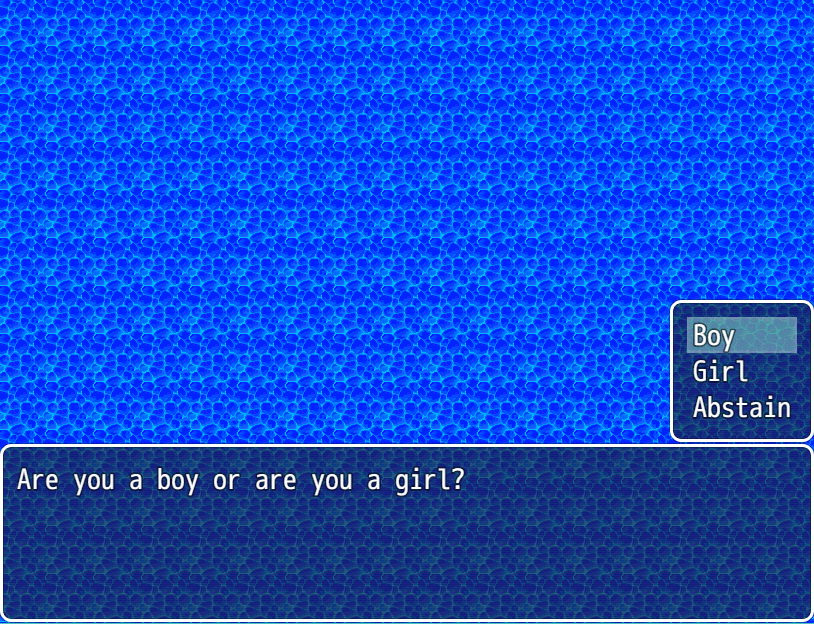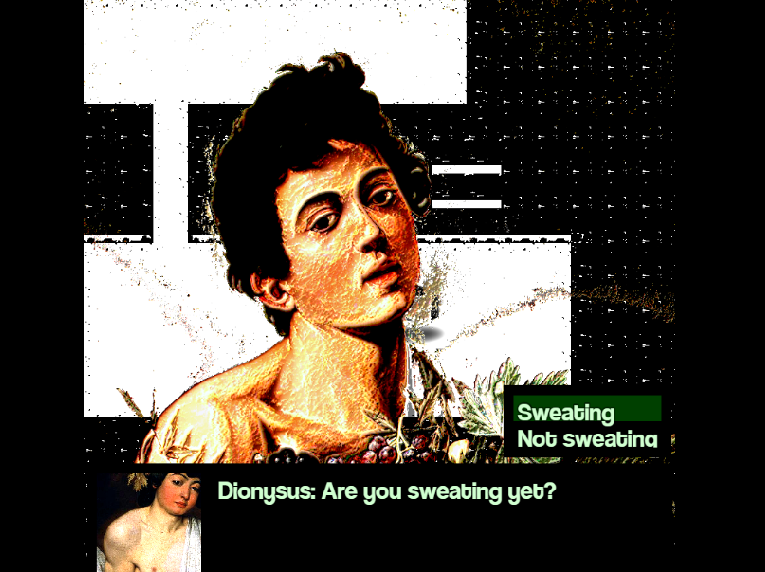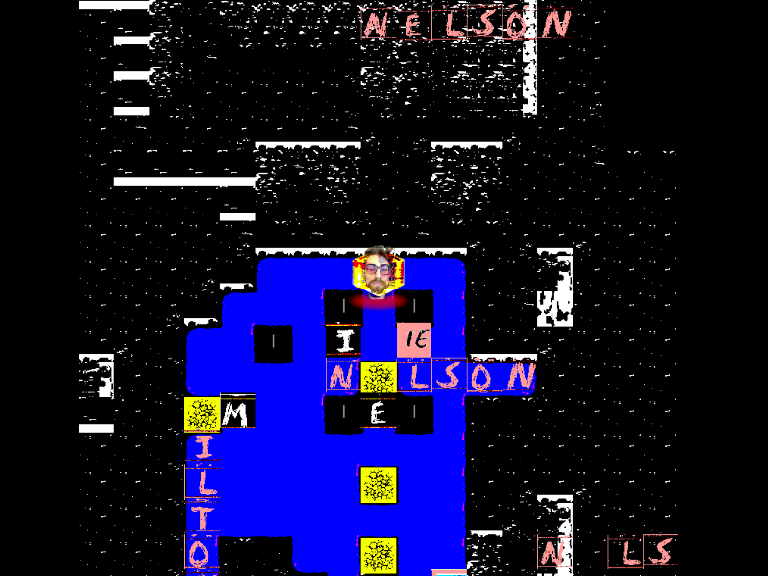Using game genre as metaphor, I put a digital avatar of myself in a series of vulnerable positions for Untitled Dating Sim. This work considers the abstractions of human bodies in games as more than just a means to score points through (a patriarchal notion). Players follow the logic of visual novels to create the possibility for love/connection rather than an exchange between player and game aestheticized by violence.
Video games are made up of designed exchanges between player and game. It is up to the game creator to assign these exchanges moralities, in-game values, and meanings, to give them flavor, inject them with violence, cleverness, primordial energy. By their nature, visual novels are designed to be quieter and more contemplative compared to games in other genres, dealing more with relationships between characters than centering around violent action sequences. Stemming from visual novels is the niche Japanese genre of dating sims, which vary from the playfully absurd to the pornographacation of characters of all genders and ages1.
Inspired by dating sims, I developed a game where the player dates three iterations of Nilson. Players are given many options throughout the dates, and while ultimately contrived and controlled, the game allows players the choice to act kind, flirty, or cold toward Nilson.
Untitled Dating Sim begins with a questionnaire. The game asks for a player’s gender, a video game trope, and then doesn’t record the answer. All other answers in the initial questionnaire are recorded in variables except for this one. A queer video game, I consider Untitled Dating Sim an interactive self-portrait and intense act of sharing.
It’s a game best played in bed with your friends.

The three fragmented identities are divided into Barista Nilson, Art School Nilson, and Boy Nilson, and each is a critical, often humorous, often earnest self-reflection. The work sometimes stumbles into self-parody, but ultimately is a way toward meaningful connection. It is an un-ironic work designed to upset the imperialist/capitalist values found in mainstream gameplay.
Untitled Dating Sim exists in a subversive place in video games because it deals exclusively with non-violent exchanges and forgoes the explicit promise of sexual gratification found in the majority of dating sims. Commercial dating sims are designed around the bargain between player and game that, if the player scores enough points, the game will reward that player with increasingly sexy anime pictures (another patriarchal system, churning forward)2.
Many of the choices in the game involve physical closeness between the player character and Nilson. Players decide if they want to remain a foot away, an inch away, shake hands or not, give a quick hug or a lingering squeeze. My challenge here is to introduce intimacy between the player and the digital avatar version of myself.
Boy’s Curse/Boy’s Blessing is an inversion of the idyllic, simplistic Untitled Dating Sim. Whereas the dating sim is an exploration of tangible themes through everyday, mundane encounters, Boy’s Curse/Boy’s Blessing illustrates thoughts and questions that are far more ambiguous and uncomfortable:
“Is he asking for it?” … “What is my true name?” … “Am I a guy, man or boy?” … “How am I perceived here?” …
A “boy” is in a constant state of stasis threatened by transformation/chaos (maturation). It is subjective which state is the curse and which is the blessing. There are no answers to these questions. Only answers to the puzzles exist, and these solutions are incredibly difficult to parse out.
The installation includes the fully playable sokoban-like puzzle game with four scenarios, an additional monitor (void) scrolling through various definitions, questions, and incantations, and a video loop projected over the entire area.3 Mirrors are used to erase/shatter the distinctions and boundaries between player, monitor, and the body of the artist being projected. There is a sense of scrolling and uneasy movement within the installation, no footing, a game built on broken glass.
The four scenarios pose questions about identity, intent, and interpretation. Scenarios are activated through a block-pushing puzzle aestheticized by mis-spellings of my name (Nilson… Nielson, Nelson, and Milton). Each scenario’s puzzle gives the player a task to solve: for instance, Nielson strives to be a successful artist, so players help him allocate Six Pack Ab blocks into his artist slots to make him a sexier (more successful) artist.
Akin to Brainard’s I Remember, the projected video loop’s audio poses question after question, and statements of remembered and forgotten truths.4 Topics and specifics filter in and out of the space, only to emerge later in-game for the player to reconsider (or not). While the game is guarded and steeped in cold abstraction and post-modern game jokes, the loop depicts my actual face, voice, and body, splayed out onto the installation space, offering a shade of vulnerability, coloring the experience in warm, fleshy light.
The two pieces together challenge each other’s assumptions. Only together do they begin to paint an accurate self-portrait, mired in doubt, confusion, unanswered questions, self-damnation, longing. Idyllic dates cannot describe the whole. Untitled Dating Sim essentially plays itself. Boy’s Curse/Boy’s Blessing is practically impenetrable. Both stretch the capacity to offer intimacy in games. These projects work to introduce a boy’s vulnerability into video games that currently struggles to find a space.

- Playfully absurd: Hatoful Boyfriend (2011); Pornographacation: see any eroge and most bishōjo (meaning “pretty girl”) games. ↩
- See HuniePop (2015) for a recent popular example. ↩
- Sokoban (meaning “warehouse keeper”) is a genre of puzzle game usually involving block pushing along a tile-based grid. ↩
- Joe Brainard, I Remember (New York: Angel Hair Books, 1970). ↩

